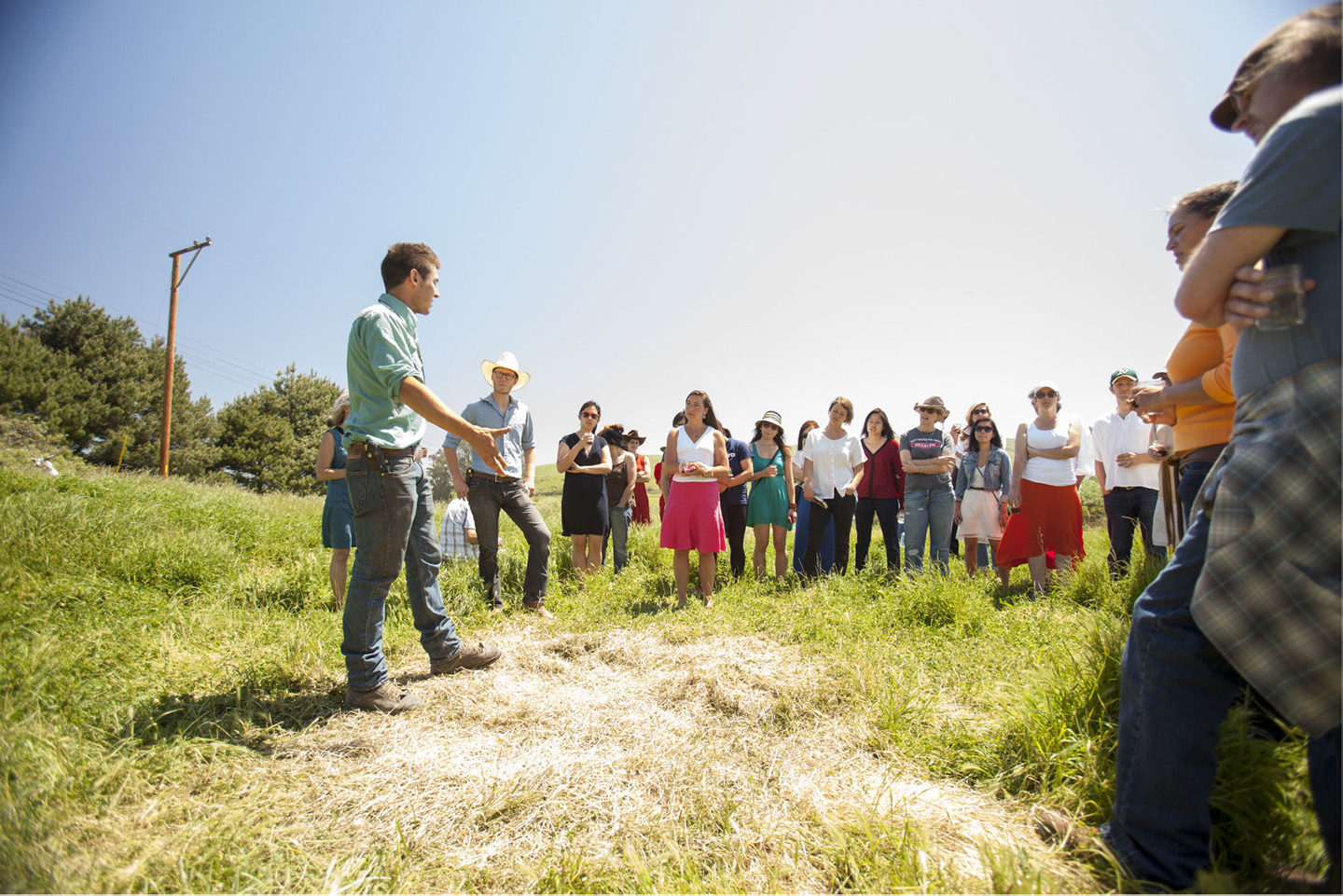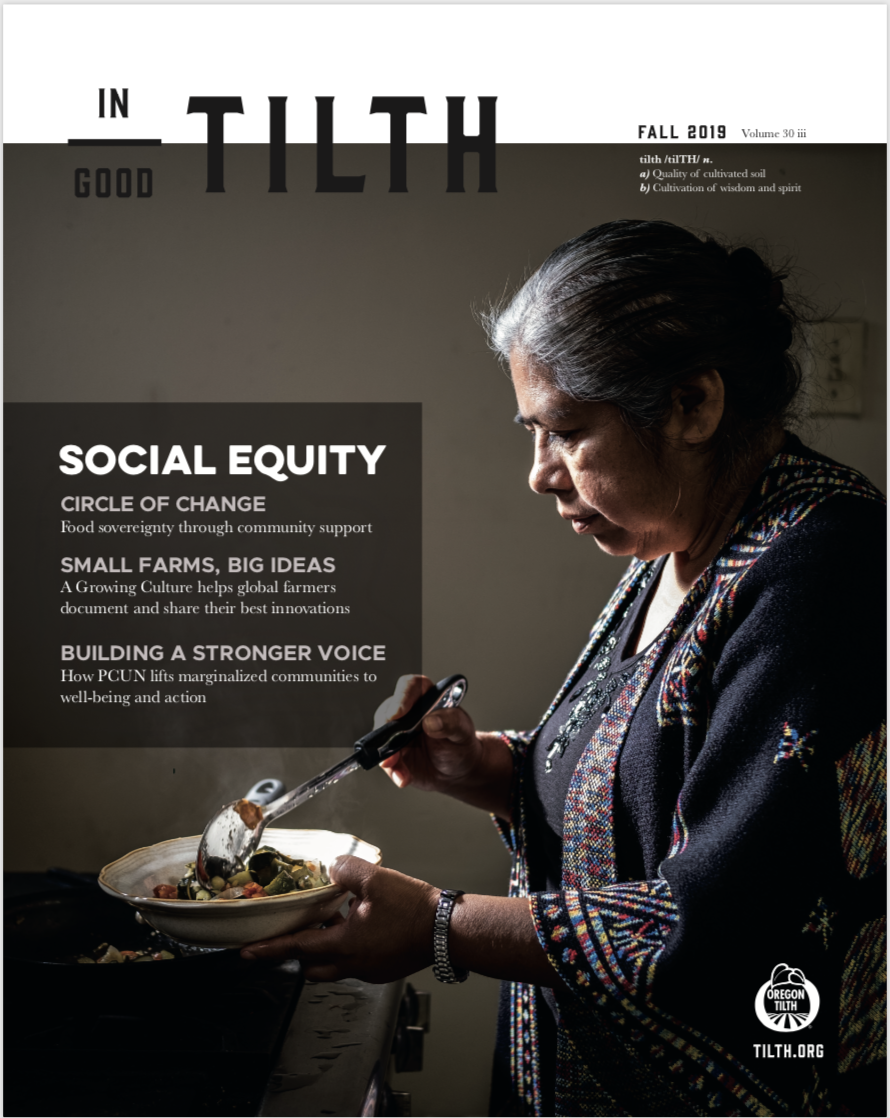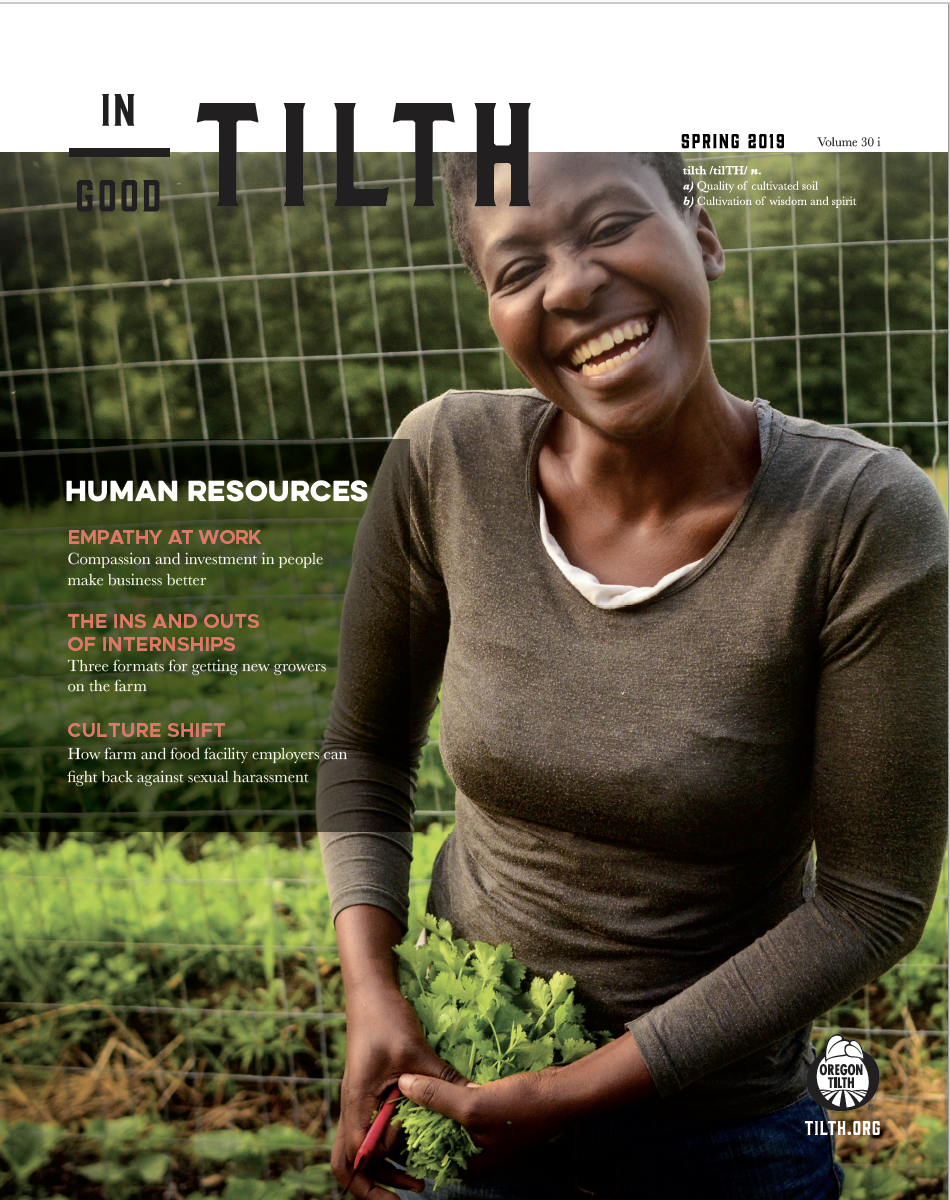Seth Watkins’ journey to sustainable land management started with baby cows shivering in a blizzard on his Iowa farm, raising a simple question: Why am I working against Mother Nature instead of with her?
Sustainable land management (SLM) aims to harmonize the complementary goals of producing food, generating income and improving the environment by working with the land as a holistic ecosystem — measuring success not only by crop or livestock yield but also by soil health, water quality and overall biodiversity that will benefit the farmer and surrounding community now and for future generations.

Watkins’ question turned his approach to farming upside down. He went from birthing cows in the early spring to letting the cows’ biological clocks guide him, meaning babies were born on warmer days and in greener pastures, with more natural food for the cows to eat and less intervention required from him. As he started working in tune with nature’s rhythms rather than his own, production increased, costs decreased and profits went up.
Watkins joined a growing movement among farmers and researchers who are looking at true-cost accounting on their farms. They’re taking a page from some of their counterparts in the business sector, measuring success not just by profits but also by social and environmental impact.
True-cost accounting identifies the full costs and benefits of a farming system, including crop and livestock yields, the prices farmers receive for their products and the affordability of food for consumers in relation to the impact on the environment and public health.
“We need to be looking at true-cost accounting [on farms],” said Claire Kremen, professor of environmental sciences policy and management and faculty co-director of the Berkeley Food Institute. “This includes pollination, pest control, soil health, watershed purity, air quality and biodiversity.”
For many farmers, true-cost accounting makes sense conceptually, but it also brings up concerns, especially among those looking to transition from large row-crop operations to more conservation-minded models. Is a more sustainable system economically practical? Can I still receive crop insurance if I plant cover crops? How will my community perceive me? The answers are complex.

The advantages of diversified farming systems
Biodiversity has many benefits for farming systems, including pest reduction, lower input costs, better soil structure and improved environmental health. Research shows that organic and diversified farming practices most commonly used for sustainable land management enhance soil quality and increase nutrient uptake, thereby decreasing the need for synthetic fertilizers and reducing nitrogen and phosphorous runoff into watersheds. Diversified systems also retain more moisture in the water table, helping to mitigate the impact of drought. Furthermore, crop rotation and intercropping can significantly reduce weed densities, control soil pathogens and increase natural enemy populations — thereby reducing the need for insecticides.
Data shows that overall organic yields are typically lower than conventional yields. However, these differences vary based on soil alkalinity, crop type and growing conditions. When looking at yield alone, organic and diversified systems often cannot compete with conventional practices without accounting for the economic, environmental and social costs and benefits: true-cost accounting.
“One of best things farmers can do to improve their bottom line is to cut input costs like pesticides or feed for animals,” said David Montgomery, professor of geomorphology at the University of Washington and author of Growing a Food Revolution: Bringing Our Soil Back to Life. “If you can reduce your input costs while maintaining your yield, you make more money. This requires farmers to shift away from looking at yields alone towards a more regenerative focus in how they manage their crops and land.”
Yields notwithstanding, systems thinking requires examining the complete environment in which today’s farmers operate. Many farmers are hesitant to adopt diversified systems for fear that doing so will make them ineligible for federally subsidized crop insurance.

embracing a process of rotational grazing that depends upon the stewardship of a natural ecosystem. Photo by True Grass Farms
Crop insurance and incentives affecting sustainable land management
The Farm Bill was first enacted in 1933 with the goals of keeping food prices fair, ensuring an adequate food supply and protecting natural resources. The current Farm Bill includes provisions for crop insurance to help farmers manage the risk of natural disasters and market fluctuations.
The Federal Crop Insurance Corporation (FCIC) is funded by taxpayers and managed by the U.S. Department of Agriculture’s Risk Management Agency (RMA), with administration by a network of private companies. The program was enacted to replace the need for ad hoc disaster legislation, which in turn helps to shelter taxpayers from the full costs of agricultural disasters. The FCIC/RMA sets program standards based on scientific research, approves new products, sets premium rates and offers subsidized discounts for farmer premiums.
Included in these program standards are provisions about planting cover crops — used to help control soil erosion, suppress weeds and add nutrients back into the soil — and how they must be managed and terminated to meet requirements for insurance. FCIC mandates that a yield crop will not be insured if a cover crop is not properly terminated in accordance with the National Resource Conservation Services (NRCS) Guidelines. However, termination following these guidelines is not always simple. Terminating a cover crop by livestock grazing does not assure that growth has ended, and stories of farmers being denied coverage due to cover crops create a feeling of unease.
For many grain farmers, especially corn and soy farmers, these requirements pose a significant barrier to adopting more conservation-minded growing practices. The risk of their crops not being covered in a disaster due to incorrect or incomplete termination of cover crops is not worth the potential soil and environmental benefits.

They thrive upon a foundation of transparency and open communication. Here, Farmer Guido Frosini explains grass farming to visitors Photo by True Grass Farms
Social influences on sustainable land management
Some farmers are inspired to use sustainable management practices as a way to give back to their local communities, as well as good business.
“I want to be the best, most regenerative farm in the San Diego County, maybe even the world,” said Kevin Muno, manager and rancher at Land of Milk and Honey LLC. “If I’m being graded not just on economic profits, but also on if I’m paying people decent wages, being a good boss, building wildlife habitat and sequestering carbon in the soil, everyone wins.”
Farmers, like all of us, benefit from community support when considering big or small changes to how they do business. The Land Stewardship Project is addressing this need by building farmer support networks to help foster a sense of comradery around conservation practices.

troubleshooting a struggling crop, commiseration and celebration. The Land Stewardship Project’s Farmer Network connects stewardship farmers
across the region through field days, tours, and workshops. Here, Farmer Dan Jenniges shows fellow farmers how to install fencing for pasture grazing. Photo by the Land Stewardship Project
“Farmer networks help us bridge the gap between research and connection,” said George Boody, science and special projects lead at the Land Stewardship Project. “Farmer networks help in sharing what farmers are learning with other farmers and bridge the gap between research and farmer-to-farmer connection.”
Guido Frosini, owner and pasture curator at True Grass Farms in Marin County, Calif., sees transparency, beauty and connection as critical to changing the way food is grown in the United States.
“Food has been outsourced so at purchase, people don’t see how their food is produced and how their food choices influence the working landscape,” said Frosini. “Third party verifiers are great at a certain scale, but to truly change people’s minds and inform their buying consciousness, it’s really about getting them directly connected. We need to show our community how their food is being grown and to encourage them to ask questions; give them an ecological landscape to better understand their foodscape.”
Like Frosini, sustainable land management gives Watkins a sense of purpose.
“I’m a farmer,” said Watkins. “My job isn’t to produce. My job is to care for the land. When I do that properly, the land takes care of us all.”

























